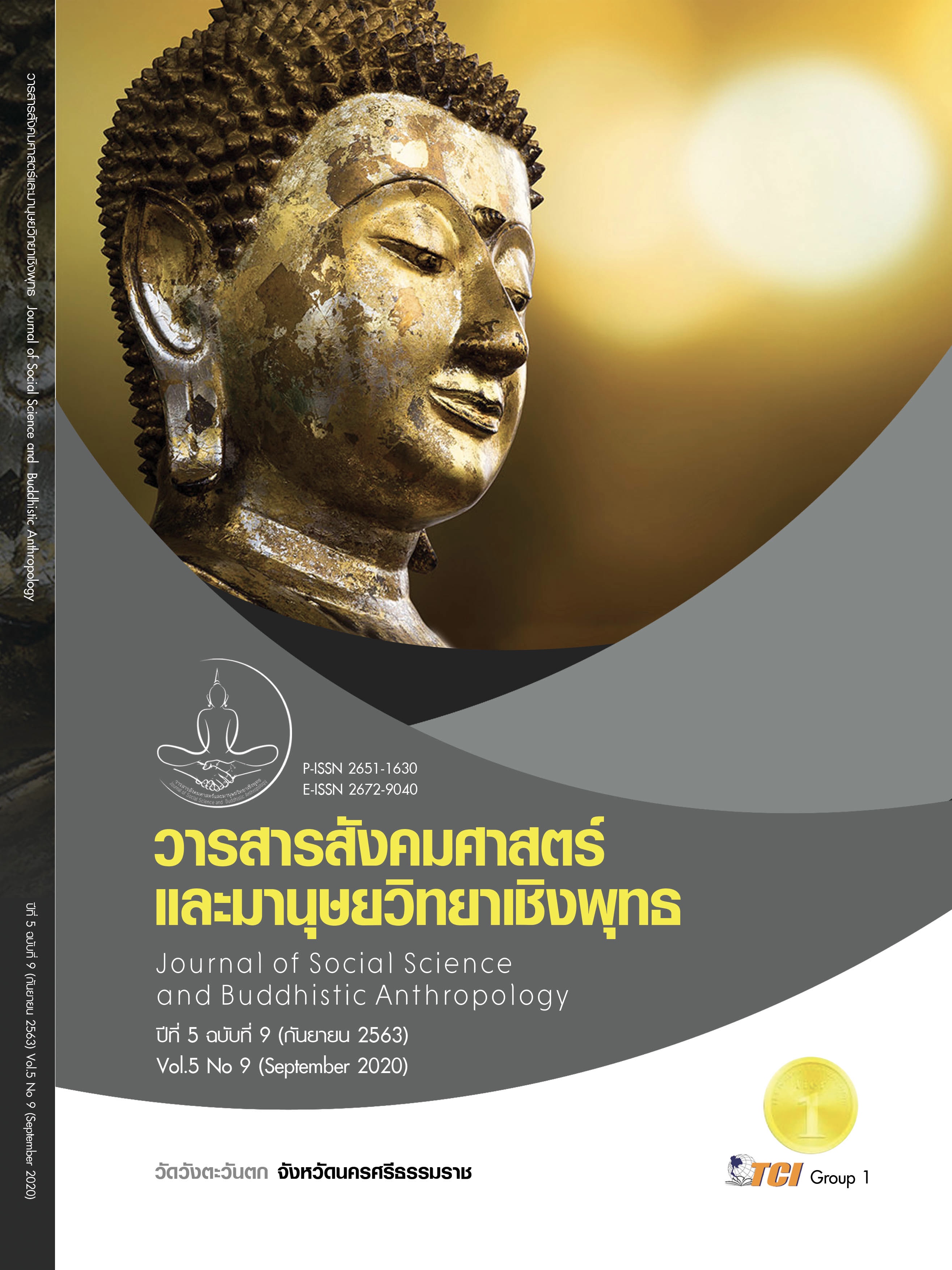APPLIANCE INCOME STATEMENT FOR DEVELOPMENT MODEL OF THE INCOME STATEMENT OF SELF – EMPLOYED
Keywords:
Income Statement, Occupation Accounting, Self - EmployedAbstract
This article aims to study the elements of income statement according to generally accepted accounting principles to appliance Income Statement for the development model of the income statement of self - employed. This study was qualitative research, the tool was the in-depth interview guide in semi-structured from including observation, as triangulation checks. Research results were revealed that the income statement of self - employed consists of three parts. 1) Head statements include career type, the period of financial statements. 2) Revenues include income from occupations, other receipts. 3) Cost / expense includes occupational costs, selling or service expenses such as expense of self, Space rental fee, Water bill, Electric bill, Consumables in production used, delivery cost, Fuel cost, Bus fare, Vinyl fee for advertising, Non - current assets asset expenditure per production cycle, interest on loan (if any) Knowledge that can occur. It is a method of calculating the performance of businesses in the business sector, with the Federation of Accounting Professions setting guidelines for bookkeepers. There are certified auditors Is a validator Independent self-employed as a sole proprietor, self-management. Application of income statement to develop profit and loss statement model for self-employed Apply identical or consistent results as a guideline for self-employed professionals and apply some of the different results to create new knowledge that will be beneficial to the accounting profession.
References
กรมตรวจบัญชีสหกรณ์. (2556). สมุดบัญชีรับ-จ่ายในครัวเรือน สมุดต้นทุนประกอบอาชีพ เสริมสร้างภูมิปัญญาทางบัญชีแก่เกษตรกรไทย ฉบับปรังปรุงปี2556. (พิมพ์ครั้งที่ 1). กรุงเทพมหานคร: กรมตรวจบัญชีสหกรณ์.
กรมพัฒนาธุรกิจการค้า. (2543). พระราชบัญญัติการบัญชีพ.ศ. 2543. กรุงเทพมหานคร: กระทรวงพาณิชย์.
บุญเสริม วิมุกตะพันธ์และคณะ. (2554). การบัญชีขั้นกลาง 1. (พิมพ์ครั้งที่ 5). กรุงเทพมหานคร: บริษัท วี.พริ้นท์ จำกัด.
เบจมาศ อภิสิทธิ์ภิญโญ. (2556). การบัญชีเบื้องต้น 2. กรุงเทพมหานคร: บริษัท ซีเอ็ดยูเคชั่น จำกัด (มหาชน).
ผกามาศ มูลวันดี. (2560). การวิเคราะห์ต้นทุนและผลตอบแทนจากการทอเสื่อกกของกลุ่มสตรีในเขตพื้นที่ตำบลทุ่งวัง อำเภอสตึก จังหวัดบุรีรัมย์. วารสารวิจัยและพัฒนา มหาวิทยาลัยราชภัฎบุรีรัมย์, 12(1), 8 - 16.
ศิริรัตน์ เจนศิริศักดิ์. (2557). การใช้ประโยชน์จากงบการเงินของผู้ประกอบการ SMEs ในจังหวัดอุบลราชธานีเพื่อการบริหารกิจการ. วารสารมนุษยศาสตร์และสังคมศาสตร์, 5(1), 39 - 63.
ศูนย์วิจัยกสิกรไทย. (2552). กลยุทธ์การบริหารบัญชีเพื่อธุรกิจก้าวไกลภายใต้วิกฤตเศรษฐกิจ. กรุงเทพมหานคร: ธนาคารกสิกรไทย.
สภาวิชาชีพบัญชีในพระบรมราชูปถัมภ์. (2558). มาตรฐานการบัญชี ฉบับที่ 1 (ปรับปรุง 2558) เรื่องการนำเสนองบการเงิน. เรียกใช้เมื่อ 25 มกราคม 2561 จาก http://www.tfac.or.th/upload/9414/Leck7pyxuW.pdf
อรุณี อย่างธาราและคณะ. (2560). การบัญชีการเงิน ปรับปรุงใหม่ตามมาตรฐานการรายงานทางการเงิน ปรับปรุง 2557. (พิมพ์ครั้งที่ 23). กรุงเทพมหานคร: คณะพาณิชยศาสตร์และการบัญชี มหาวิทยาลัยธรรมศาสตร์.
อังครัตน์ เพรียบจริยวัฒน์. (2554). การวิเคราะห์งบการเงิน. (พิมพ์ครั้งที่ 6). กรุงเทพมหานคร: บริษัทอมรินทร์พริ้นติ้งแอนด์พับลิชชิ่ง จํากัด (มหาชน).
อัมพร เที่ยงตระกูลและคณะ. (2555). การบัญชีการเงิน. กรุงเทพมหานคร: มหาวิทยาลัยธุรกิจบัณฑิต.








